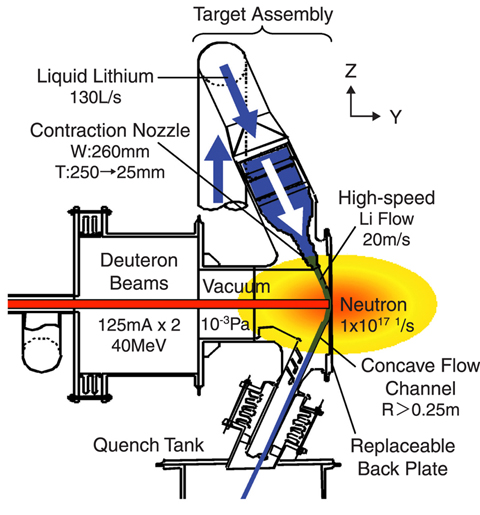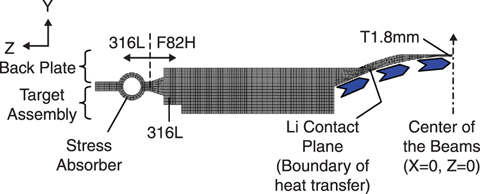
Fig.3-25 Concept of IFMIF liquid lithium (Li) target

Fig.3-26 Thermal stress analysis model

Fig.3-27 Results of thermal stress analysis on back plate under beams operation
For the development of fusion reactor materials, it is necessary to evaluate damage to the candidate materials by 14MeV neutrons generated by the deuterium-tritium fusion reaction. The International Fusion Materials Irradiation Facility (IFMIF) is designed to produce an intense high energy neutron flux for testing candidate materials to be used in the fusion DEMO reactor. At present, Engineering Validation and Engineering Design Activities (EVEDA) for IFMIF are in progress as part of the international collaboration between Japan and EU called "Broader Approach Activities".
The concept of a liquid lithium (Li) target generating intense neutrons is shown in Fig.3-25. Deuterons (D) are accelerated up to 40MeV by accelerators and injected into a Li target. Intense neutrons with a peak energy around 14MeV are generated by the D-Li nuclear reaction. For removal of the 10MW heat power produced by the deuterium beams (40MeV, 250mA), high-speed liquid lithium flow is generated. Moreover, to avoid boiling of the liquid Li even in the vacuum condition of the accelerators, the flow channel is designed to be concave to provide centrifugal force, and boiling temperature is increased by the pressure built up by the Li flow. Because the back plate with the concave flow channel is irradiated by the intense neutrons, the back plate is made of reduced activation ferritic steel (F82H). Thickness of the back plate at a center is design to be 1.8mm to minimize attenuation of the neutrons by the wall as small as possible.
We studied the feasibility of a back plate structure intended to withstand severe conditions by thermal stress analysis of a model thereof, shown in Fig.3-26. As a result, even during beam operation with temperature distribution caused by the neutron heat as shown in Fig.3-27 left, thermal compression stress in radial directions was 286MPa at the maximum, within the acceptable range, by a circular structure to absorb thermal stress.
In the EVEDA project, in parallel with designing of actual devices for IFMIF, a Li test loop is under construction for conducting various validation tests for important technologies. The loop is to produce a Li flow hydrodynamically similar to IFMIF, in order that stability of high-speed Li flow and safety and integrity of the loop operation over a long period are validated. Techniques of flow measurement and purification using impurity traps are also to be validated with this loop.